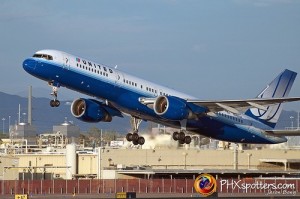
The flight is partially powered with Solazyme’s algae biofuel, making it the first commercial flight powered with algae biofuel. Solajet, the trademark name of the fuel, is a 40/60 blend of algae-based fuel and petroleum-based traditional jet fuel.
Solazyme makes Solajet by turning agricultural waste into algal oil, which is then adapted to produce jet fuel. The company says that over its lifecycle its Solajet reduces emissions by 93 per cent compared with standard jet fuel.
Biofuel made of cooking oil
It’s not only United Airlines that is flying on biofuel, though. Alaska Airlines has announced it will fly 75 commercial passenger flights powered by biofuel starting on Wednesday.
The company will be using 20 percent blend biofuel made from used cooking oil which meets “rigorous international safety and sustainability standards.†Two maiden biofuel-powered flights will leave Seattle on November 9 for Washington, D.C., and Portland in Oregon. Alaska Airlines and its sister carrier, Horizon Air, will continue to operate select flights between Seattle and the two cities over the next few weeks using the same biofuel and blend.
Alaska Air estimates the 20 percent certified biofuel blend it is using for the 75 flights will reduce greenhouse gas emissions by an estimated 10 percent, or 134 metric tons, the equivalent of taking 26 cars off the road for a year. It all Alaska Air flights were powered with the biofuel with a 20 per cent blend, the company estimates it would equal to removing nearly 64,000 cars off the road or providing electricity to 28,000 homes.
You should follow us here.





